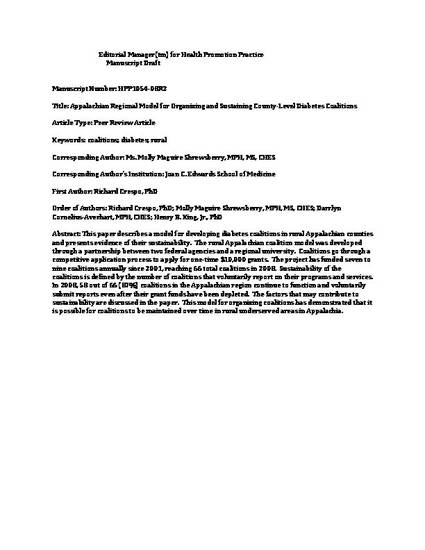
This article describes a model for developing diabetes coalitions in rural Appalachian counties and presents evidence of their sustainability. The rural Appalachian coalition model was developed through a partnership between two federal agencies and a regional university. Coalitions go through a competitive application process to apply for one-time $10,000 grants. The project has funded 7 to 9 coalitions annually since 2001, reaching 66 total coalitions in 2008. Sustainability of the coalitions is defined by the number of coalitions that voluntarily report on their programs and services. In 2008, 58 of 66 (87%) coalitions in the Appalachian region continue to function and voluntarily submit reports even after their grant funds have been depleted. The factors that may contribute to sustainability are discussed in the article. This model for organizing coalitions has demonstrated that it is possible for coalitions to be maintained over time in rural underserved areas in Appalachia.

The final, definitive version of this paper has been published in Health Promotion Practice, Vol. 12, Issue 4, March 2011 by SAGE Publications, Inc., All rights reserved. © 2011 Society for Public Health Education http://hpp.sagepub.com/content/12/4/544.abstract.